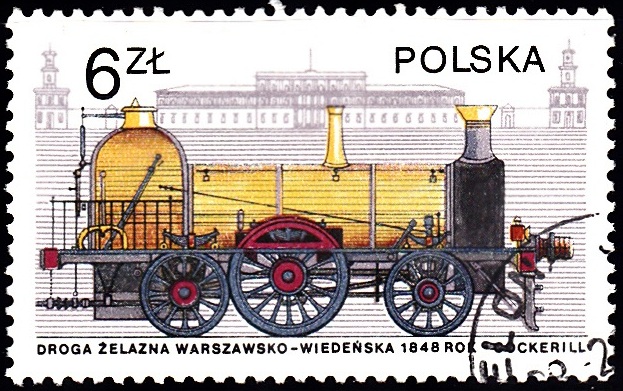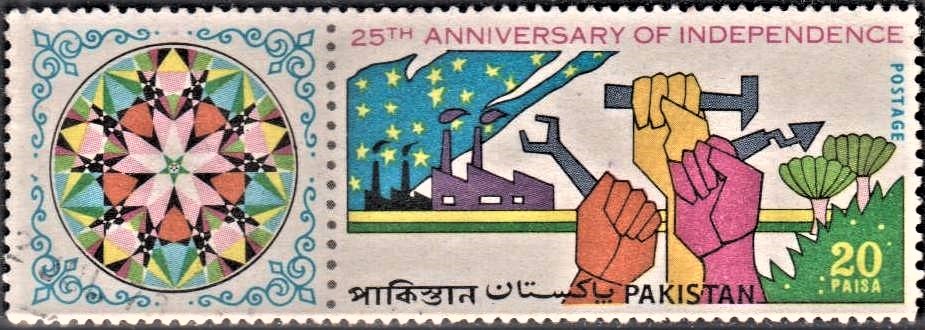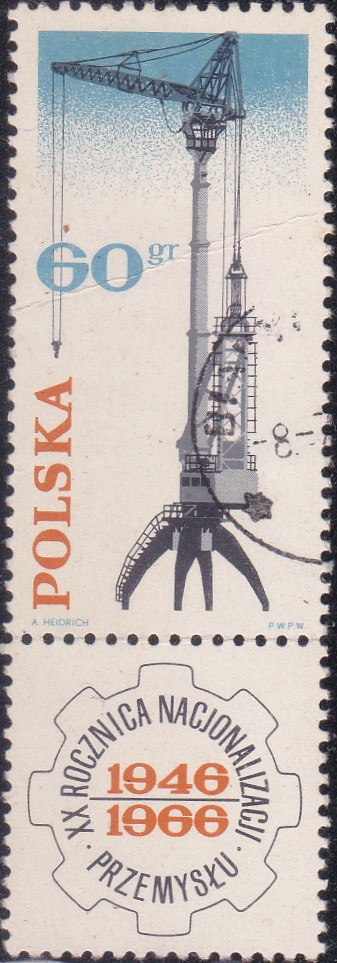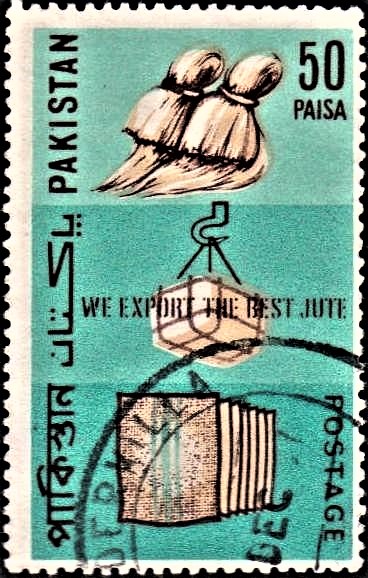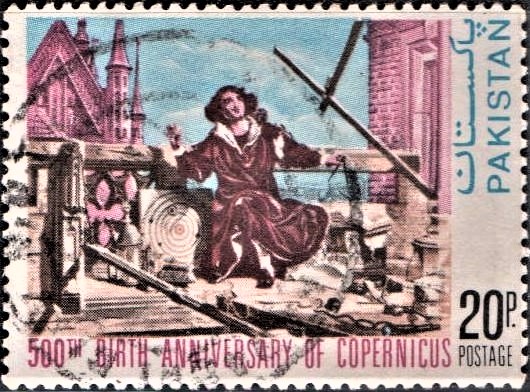
Pakistan on Nicolas Copernicus
A commemorative postage stamp on the 500th Birth Anniversary of Nicolaus Kopernikus :
 Issued by Pakistan
Issued by Pakistan
Issued on Feb 19, 1973
Design : The stamp which is horizontal in format and depicts the famous Polish astronomer Copernicus whose 500th Birth Anniversary is being celebrated all over the world.
The design of the stamp is basically based on a painting in which Copernicus is shown in his observatory making some astronomical observations. All sort of astronomical instruments, maps, telescope and books are scattered around him. A church and other buildings of the city against a blue sky can be seen in the back-ground. The caption “500th Birth Anniversary of Copernicus” appears in red at the fixit of the picture. The word ‘Pakistan‘ in Urdu and English appears in Blue Colour at the top in vertical position in the white panel at right side of the picture. The denomination “20 Paisa” with “Postage” underneath appear at the foot of this panel in black.
Type : Stamp, Postal Used
Denomination : 20 Paisa
Colour : Magenta, Blue, Light Brown and Black
Size of Stamp : 44.5 x 32.5 mm
Size of Print : 41.5 x 29.5 mm
Perforation Gauge : 13 x 13 (c)
Quantity Printed : 10,00,000
Number of Stamps in each sheet : 50
Process of Printing : Litho Offset
Printers : The Pakistan Security Printing Corporation Limited, Karachi
Name : Nikolaus Kopernikus
Born on Feb 19, 1473 at Toruń (Thorn), Royal Prussia, Kingdom of Poland
Died on May 24, 1543 at Frombork (Frauenburg), Prince–Bishopric of Warmia, Royal Prussia, Kingdom of Poland
About :
- COPERNICUS or KOPPERNIGK, NICOLAS (1473-1543), Polish astronomer, was born Feb. 19, 1473, at Thorn in Prussian Poland, where his father, a native of Cracow, had settled as a wholesale trader. Nicolas was virtually adopted by his uncle Lucas Watzelrode, later (1489) bishop of Ermeland. He studied mathematical science at the University of Cracow under Albert Brudzewski (1445-97), and incidentally acquired some skill in painting. At the age of 23 he repaired to Bologna, and there varied his studies of canon law by attending the astronomical lectures of Domenico Maria Novara (1454-1504). At Rome, in the Jubilee year 1500, he himself lectured with applause; but having been nominated in 1497 canon of the cathedral of Frauenburg, he recrossed the Alps in 1501 with the purpose of obtaining further leave of absence for the completion of his academic career. Late in 1501 he entered the medical school of Padua, where he remained until 1505, having taken a doctor’s degree in canon law at Ferrara on May 31, 1503. After his return to Poland he resided at the episcopal palace of Heilsberg as his uncle’s physician until the bishop‘s death on March 29, 1512. He then retired to Frauenburg, and attended to his capitular duties. He never took orders, but acted continually as the representative of the chapter under harassing conditions, administrative and political; he was besides commissary of the diocese of Ermeland; his medical skill, always at the service of the poor, was frequently in demand by the rich; and he laid a scheme for the reform of the currency before the Diet of Graudenz in 1522. Yet he found time to elaborate a new system of astronomy, by the adoption of which man’s outlook on the universe was fundamentally changed.
- The main lines of his great work were laid down at Heilsberg; at Frauenburg, from 1513, he sought, with scanty instrumental means, to test by observation the truth of the views it embodied (see ASTRONOMY: History). His dissatisfaction with Ptolemic doctrines was of early date; and he returned from Italy, where so called Pythagorean opinions were then freely discussed in strong and irrevocable possession of the heliocentric theory. The treatise in which it was set forth, virtually finished in 1530, began to be known through the circulation in manuscript of a Commentariolus, or brief popular account of its purport, written by Copernicus in that year. Johann Albrecht Widmanstadt lectured upon it in Rome; Clement VII, approved, and Cardinal Schonberg transmitted to the author a formal demand for full publication. But his assent to this was only extracted from him in 1540 by the importunities of his friends, especially of his enthusiastic disciple George Joachim Rheticus (1514-76), who printed, in the Narratio prima (Danzig, 1540), a preliminary account of the Copernican theory, and simultaneously sent to the press at Nuremberg his master’s complete exposition of it in the treatise entitled De revolutionibus orbium coelestium (1543). But the first printed copy reached Frauenburg barely in time to be laid on the writer’s death-bed. Copernicus was seized with apoplexy and paralysis towards the close of 1542, and died on May, 24, 1543, happily unconscious that the fine Epistle, in which he had dedicated his life’s work to Paul III, was marred of its effect by an anonymous preface, slipt in by Andreas Osiander, with a view to disarming prejudice by insisting upon the purely hypothetical character of the reasonings it introduced. The trigonometrical section of the book had been issued as a separate treatise (Wittenberg, 1542) under the care of Rheticus. The only work published by Copernicus on his own initiative was a Latin version of the Greek epistles of Theophylact (Cracow, 1509). His treatise De monetae cudendae ratione (1526) (first printed in 1816), written by order of King Sigismund I, is an exposition of the principles on which it was proposed to reform the currency of the Prussian provinces of Poland.
- Issued by: The Director-General, Pakistan Post Office, Karachi.



